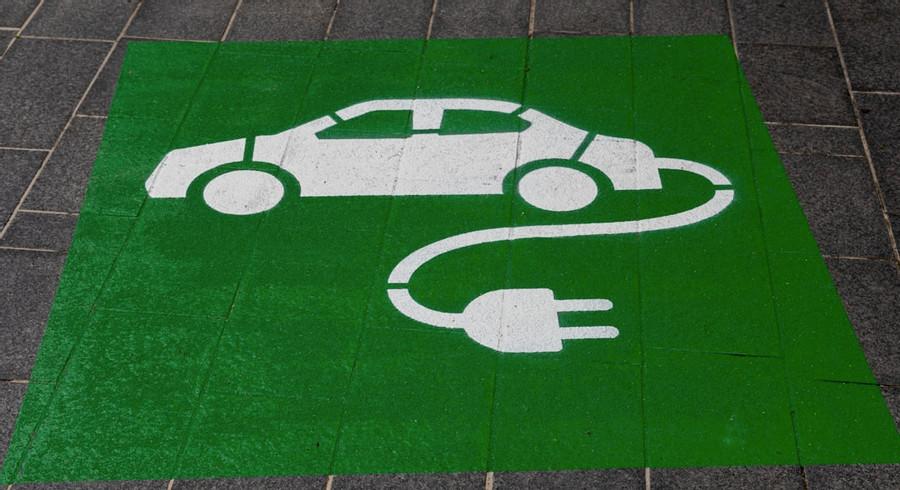Quantum computing just might save the planet
Curated from: mckinsey.com
Ideas, facts & insights covering these topics:
11 ideas
·243 reads
5
Explore the World's Best Ideas
Join today and uncover 100+ curated journeys from 50+ topics. Unlock access to our mobile app with extensive features.
Quantum Computing And Global Warming
The emerging technology of quantum computing could revolutionize the fight against climate change, transforming the economics of decarbonization and becoming a major factor in limiting global warming to the target temperature of 1.5°C.
Exponentially more powerful machines could make possible major reductions in emissions, putting the goal of limiting global warming within reach.
3
47 reads
Quantum Computing- A Primer
Quantum Computing is a new technology that leverages the laws of quantum mechanics to produce exponentially higher performance for certain types of calculations, offering the possibility of major breakthroughs across several end markets.
The technology works by calculating with qubits, which can represent 0 and 1 at the same time. By contrast, classical computing calculates with transistors that represent either 0 or 1.
In quantum computing, power increases exponentially in proportion to the number of qubits; with classical computing, power incre
3
36 reads
Solving Unsolvable Problems
Quantum computing could help reduce emissions in some of the most challenging or emissions-intensive areas, such as agriculture or direct-air capture, and could accelerate improvements in technologies required at great scale.
Quantum computing could bring about step changes throughout the economy that would have a huge impact on carbon abatement and carbon removal
3
36 reads
Global Warming: Batteries
- Improving the energy density of lithium-ion batteries enables applications in electric vehicles and energy storage at an affordable cost
- Quantum computing could allow breakthroughs by providing a better understanding of electrolyte complex formation, by helping to find a replacement material for cathode/anode with the same properties, and/or by eliminating the battery separator
- Higher-density energy batteries can serve as a grid-scale storage solution
4
25 reads
Global Warming: Cement
During calcination in the kiln for making clinker, a powder used to make cement, CO2 is released from raw materials.
Alternative cement-binding materials (or "clinkers") can eliminate these emissions, but there's currently no mature alternative clinker that can significantly reduce emissions at an affordable cost.
3
20 reads
Harnessing The Sun: Solar Cells
Currently, solar cells rely on crystalline silicon and have an efficiency on the order of 20 percent
Perovskite crystal structures, which have a theoretical efficiency of up to 40 percent, could be a better alternative
They present challenges, however, because they lack long-term stability and could, in some varieties, be more toxic
Quantum computing could help solve these challenges by allowing for precise simulation
If the theoretical efficiency increase can be reached, the levelized cost of electricity (LCOE) would decrease by 50 percent
3
18 reads
Harnessing Air: Hydrogen
- Improving electrolysis could significantly decrease the cost of hydrogen
- Electrolyzers have delicate membranes that allow the split hydrogen to pass from the anode to the cathode (but keeps the split oxygen out).
- Catalysts and membranes do not yet interact well
- Quantum computing can help model the energy state of pulse electrolysis to optimize catalyst usage
- Increased hydrogen use as a result of these improvements could reduce CO2 emissions by an additional 1.1 gigatons by 2035
3
16 reads
Saving Our Soil: Ammonia
Best known as a fertilizer, ammonia could also be used as fuel. Currently, it is made through an energy-intensive process using natural gas.
Other potential approaches include Nitrogenase bioelectrocatalysis.
This method is attractive because it can be done at room temperature and at 1 bar pressure
Quantum computing can help simulate the process of enhancing the stability of the enzyme, protecting it from oxygen and improving the rate of ammonia production by nitrogenase.
3
13 reads
Harnessing Air: CO2 Capture
- CO2 can be captured directly from industrial sources such as a cement or steel blast furnace
- The vast majority of CO2 capture is too expensive to be viable for now
- One possible solution: novel solvents
- Quantum computing promises to enable more accurate modeling of molecular structure
- Could reduce the cost of the process by 30 to 50 percent
- Potential to decarbonize industrial processes
3
10 reads
Reforming Food and Forestry
Twenty percent of annual greenhouse-gas emissions come from agriculture-and methane emitted by cattle and dairy is the primary contributor (7.9 gigatons of CO2e, based on 20-year global-warming potential).
Research has established that low-methane feed additives could effectively stop up to 90 percent of methane emissions, but applying those additives to free-range livestock is difficult.
3
11 reads
The Bottom Line
With $3 to $5 trillion in value at stake in sustainability, according to McKinsey research, climate investment is an imperative for big companies.
Governments have an important role to play by creating programs at universities to develop quantum talent and by providing incentives for quantum innovation for climate, particularly for use cases that today do not have natural corporate partners, such as disaster prediction or that aren't economical.
3
11 reads
IDEAS CURATED BY
Ralph Caldwell's ideas are part of this journey:
Learn more about scienceandnature with this collection
How to make sustainable choices in everyday life
Identifying ways to reduce waste and conserve resources
Understanding the impact of human actions on the environment
Related collections
Similar ideas
5 ideas
Four myths about building a software business
mckinsey.com
14 ideas
Scaling AI like a tech native: The CEO’s role
mckinsey.com
5 ideas
Read & Learn
20x Faster
without
deepstash
with
deepstash
with
deepstash
Personalized microlearning
—
100+ Learning Journeys
—
Access to 200,000+ ideas
—
Access to the mobile app
—
Unlimited idea saving
—
—
Unlimited history
—
—
Unlimited listening to ideas
—
—
Downloading & offline access
—
—
Supercharge your mind with one idea per day
Enter your email and spend 1 minute every day to learn something new.
I agree to receive email updates









